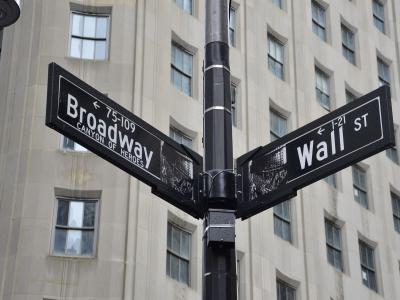Contents
Demand-pull inflation happens when consumer demand is more than the supply available, which then causes the price of goods to increase in price. Government spending, exchange rates, taxes, growing economy, and technology all cause demand-pull inflation. So while demand-pull inflation is driven by consumers, cost-push inflation is driven by the supply chain itself. His notion of the inflationary gap which he put forward in his booklet represented excess of aggregate demand over full-employment output.
- As a result, the multiplier effect of investment will come into operation resulting in a higher national output.
- Increased money supply in an economy where demand is increasing and supply falls short even when resources are functioning at an optimal level, leads to inflation.
- Demand-pull inflation is when there is an increase in aggregate demand, and the supply remains the same or decreases.
- Basically, inflation is caused by a situation whereby the pressure of aggregate demand for goods and services exceeds the available supply of output .
- This kind of inflation occurs, for many economic groups in society have the power to force up wages and prices.
- It is because of uncertainty of expected inflation, investors become reluctant to invest in their business and to make long-term commitments.
When iPhones were fairly new, the number of suppliers making these cases was few, which meant the demand often outweighed the supply and people paid more than they might be willing to pay today. AD represents aggregate demand for or aggregate expenditure on goods and services which is composed of consumption demand and investment demand . It is important to note that both the original quantity theorists and the modern monetarists, prominent among who is Milton Friedman, also explain inflation in terms of excess demand for goods and services. But there is an important difference between the monetarist view of demand-pull inflation and the Keynesian view of it.
Rise in wage shifts the AS curve to AS1 and the new equilibrium point is E1. At this point, the higher price level is at P1 and the reduced level of output is at Y1. For example, cost-pull inflation results when the aggregate supply of goods and services decreases because of an increase in production costs. For instance, if low-paid workers in a factory form a union and demand higher wages, it’s possible the factory owner will simply shut down the business in response. Cost push inflation means the increase in the general price level caused by the rise in prices of the factors of production, due to the shortage of inputs i.e. labour, raw material, capital, etc.
Key Differences Between Demand-Pull and Cost-Push Inflation
This phenomenon pushes the price upward and results in Profit Push Inflation.The raw material push inflation also known as supply shock inflation is the main and the most important reason for cost push inflation. Cost-push inflation occurs when money is transferred from one economic sector to another. Specifically, an increase in production costs such as raw materials and wages inevitably is passed on to consumers in the form of higher prices for finished goods. In brief, increase in aggregate demand i.e., increase in (C + I + G + X – M) causes price level to rise. However, aggregate demand may rise following an increase in money supply generated by the printing of additional money which drives prices upward. That is why Milton Friedman argues that inflation is always and everywhere a monetary phenomenon.
- The basket of goods that had cost Rs 10,0000 in the previous year is now costing Rs 1,20,000.
- We can take an example of a small country named Staples with a landmass of just 100 square miles.
- A deficit budget may be financed by the additional money creation.
- Cost-push inflation occurs when prices increase due to increases in production costs, such as raw materials and wages.
- Buying now rather than later, is a predictable response to declining purchasing power.
Thus, it is important to spot demand-pull inflation when it happens and keep a check on it. Second, make sure you are aware of the causes of demand-pull inflation. Demand-pull inflation can affect you because you might not know what is causing it.
What is an example of cost pull inflation Quizlet?
This will help you better understand why prices are rising and will allow you to avoid certain products or services that are causing the problem. If economic growth is low, https://1investing.in/ it is likely that demand-pull inflation is also present. Second, demand-pull inflation can lead to higher unemployment rates as more people are competing for fewer jobs.
In such situation the prices rise due to higher demand caused by larger spending for the limited amount of goods available during the full employment period. With that, we can define demand-pull inflation as a type of inflation that occurs when the price level increases due to a greater demand for a good than there is supply available. When too many people want or demand a product, such as your favorite shampoo, and there is not enough supply to meet this demand, the price begins to rise. This is simply because too many people want to purchase more goods than can be supplied by the economy, forcing customers to compete for limited goods, thereby pushing prices up. Demand-pull inflation is a type of inflation that occurs when there is an increase in demand for goods and services.
Demand-Pull Inflation Defined
However, if in an inflation-ridden economy creditors chronically loose, it is wise not to advance loans or to shut down business. How does demand-pull inflation differ from cost-push inflation? finance officer salary Demand-pull inflation is driven by consumers, while cost-push inflation is driven by producers. Demand-pull inflation is driven by producers, while cost-push inflation is driven by consumers.
Rising price and rising profit encourage firms to make larger investments. Sometimes, unionised worker succeeds in raising wage rates of white-collar workers as a compensation against price rise. In other words, wage rate increases always lag behind price increases. Naturally, inflation results in a reduction in real purchasing power of fixed income-earners.
Why does cost-push inflation cause prices to go up?
I really appreciate your help by making me understand demand-pull inflation better😊. Creation of jobs — As demand for goods and services increases, more jobs are created to create a higher supply of the same. Demand-pull inflation can cause people to spend more money than they should, or even on things they do not need. Make sure you are only buying the things you need and not wasting money. First, make sure you are aware of the signs of demand-pull inflation. If you see any of the signs of inflation, it may be time to rethink your spending habits.

Thus, inflation is caused by the interplay of various factors. A particular factor cannot be held responsible for any inflationary price rise. If the speed of upward thrust in prices is slow but small then we have creeping inflation. What speed of annual price rise is a creeping one has not been stated by the economists. To some, a creeping or mild inflation is one when annual price rise varies between 2 p.c. If a rate of price rise is kept at this level, it is considered to be helpful for economic development.
This increased demand for workers puts upward pressure on wages, leading to wage-push inflation. Finally, higher wages increase the disposable income of employees, leading to a rise in consumer spending. In Keynesian theory, increased employment results in increased aggregate demand , which leads to further hiring by firms to increase output. Due to capacity constraints, this increase in output will eventually become so small that the price of the good will rise.
Meaning of Inflation:
In response to the demand, companies hire more people so that they can increase their output. Eventually, the demand for consumer goods outpaces the ability of manufacturers to supply them. Further, inflationary situation may be associated with the fall in output, particularly if inflation is of the cost-push variety. Thus, there is no strict relationship between prices and output. An increase in aggregate demand will increase both prices and output, but a supply shock will raise prices and lower output. Suppose, wage rates rise due to the activities of the trade union.
This entry was posted on Понедельник, 14 марта, 2022 at 15:03
You can follow any responses to this entry through the RSS 2.0 feed.
Posted in: Forex Trading
